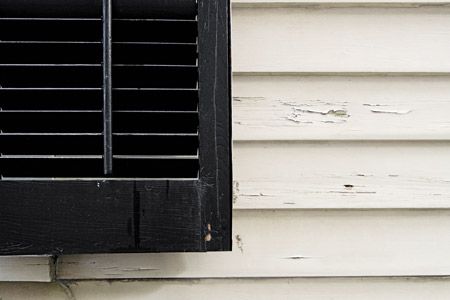Lead was once used in paint to make it long-lasting, but it’s since been recognized as a potent neurotoxin if ingested or inhaled. Homes built today do not have any lead paint, but if your house was built before 1978, there’s a 75% chance that a layer of lead lurks somewhere within.
While intact lead paint may not be an immediate hazard, you need to address it properly when renovating or if the paint begins to deteriorate. Understanding the dangers, identifying lead sources, and following safe removal or encapsulation practices are key to protecting your family’s health.
Identifying Lead in Your Home
While peeling paint is an obvious place to look, lead can be found in various other places throughout older homes. Check plumbing fixtures and pipes, soil around the house, and old toys and furniture.
To determine if there is lead in your home, send suspicious paint-chip samples to a testing site like Macs Lab. Unlike the simple (and frequently unreliable) lead-paint detection kits sold at home centers, a lab test can give you a definitive answer about the chemical makeup of the stuff you’ll be scraping.
Best Practices for Lead Paint Removal
Lead paint is relatively harmless when left undisturbed. As long as the old paint is well adhered, you can keep it safely encapsulated under a latex primer like PrimeRX and a well-maintained top coat. Preventing paint failure is the best and cheapest defense against exposure.
But inevitably, the time will come when that old paint will be disturbed as part of prepping your house for painting.
Hand Scraping
There aren’t any restrictions on hand sanding and scraping because the risk of exposure to dust is minor, but a few simple steps can help keep the lead from getting out of control:
- Spread 6-mil poly drop cloths along the perimeter of your house to catch the falling chips and dispose of them when you’re done.
- Wet down surfaces before scraping or sanding to keep debris from going airborne.
- Wear a half-face respirator equipped with a HEPA filter cartridge or N100 disposable respirator.
- Wash hands before eating or drinking.
- Launder work clothes in a separate cycle.
Power Tools
When you or your painter plug in a power tool to attack lead paint, the danger level goes up. Check with your local building department to see what they require. You may have to work within a blue-tarp tent or use specialized tools like the Paint Shaver grinder, which has a dust-collecting shroud connected to a HEPA-rated vacuum.
Proper containment and ventilation are crucial to reducing the risks associated with power tool usage.
Heat Tools
Heat has long been used to soften old paint so it can be easily scraped off. The problem is that lead starts to vaporize when heated over 752 degrees Fahrenheit, and you can end up breathing in the poisonous fumes.
A HEPA respirator and copious ventilation should keep you safe. But it’s wise to avoid using heat guns or plates unless they have temperature controls. Infrared paint strippers such as Speedheater are much safer because they work well below lead’s vaporization temperature.
Chemical Strippers
Non-flammable paint strippers are another acceptable low-dust alternative, but they can be slow, messy, and expensive. If you do use this method, follow the manufacturer’s guidelines closely.
Post-Removal Cleanup
A thorough cleanup process is essential after any lead paint removal activity. Use HEPA vacuums and wet wiping methods to clean all surfaces. Ensuring proper disposal of contaminated materials according to local regulations helps protect both human health and the environment.
Legal and Regulatory Considerations of Lead
Faced with strict local removal and disposal regulations, many painters prefer to leave lead removal to licensed subcontractors. “Abatement is more than just having the equipment and sucking up the dust,” says Portland, Ore., painting contractor Kathleen George. “You need to understand and follow all the rules. I prefer calling in a pro so that I can focus on painting.”
Local Building Department Requirements
Check with your local building department for specific requirements regarding lead paint removal. Some areas may require:
- Permits for lead abatement work
- Use of certified lead abatement contractors
- Specific containment and disposal procedures
EPA Guidelines
The Environmental Protection Agency (EPA) has established guidelines for lead paint removal, as well, and offers a certification program for lead removal.
Before starting a lead removal project, consult the EPA’s lead information center for the most up-to-date guidelines and regulations. Following EPA regulations ensures that lead paint removal is conducted in a safe and environmentally responsible manner.
State-Specific Regulations
In addition to federal guidelines, states may have specific regulations related to lead paint. These can include stricter safety standards, additional certification requirements, and more detailed disposal procedures. Checking state regulations ensures comprehensive compliance.
When To Call a Professional for Lead Removal
While some lead paint removal tasks can be DIY projects, there are times when it’s best to call in a professional. Recognizing when to seek expert help can save time and reduce risks. Certified lead abatement contractors offer several advantages:
- Expertise in safe removal techniques
- Proper equipment and containment methods
- Knowledge of local regulations and proper disposal
- Liability insurance coverage
Cost of Professional Lead Abatement
Hiring a certified lead abatement contractor involves costs that vary based on the extent of the work, location, and specific requirements. According to Angi, professional lead removal costs can range from $8 to $15 per square foot. The average cost for a lead paint removal project is around $3,000.
Additional Services from Professionals
Professional lead abatement contractors may offer additional services such as post-removal testing, long-term monitoring, and maintenance plans. These services can provide ongoing safety and assurance, making them a valuable addition to the primary abatement work.
For more information—including a listing of risk assessors who can determine the extent of paint problems and certified abatement contractors who can help solve them—contact The National Lead Information Center or call them at 800-424-5323.

